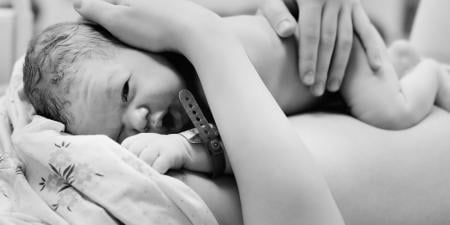A society should be judged not by how it treats its outstanding citizens but by how it treats its criminals.
Dostoevsky
The United States has the highest incarceration rate of women in the world, with over 205,000 women currently behind bars in either state and federal prisons or jails and another million on probation or parole [1]. With an eightfold increase in the female incarcerated population since the 1970s, more women are incarcerated now than at any other point in U.S. history, and this rapid, unprecedented growth is predicted to continue [2]. Numerous studies indicate that the increase in numbers of incarcerated women is largely the result of the “war on drugs,” the governmental policy changes on drug sentencing that include mandatory minimum sentencing laws for low-level drug offenses and the prioritization of drug arrests by law enforcement [3, 4]. Because women are more likely than men to be in prison or jail for nonviolent, low-level drug-related crimes, women, especially poor women of color, bear a significant burden of this “war” [5].
As a historically male-focused institution, correctional facilities often fail to address the needs of incarcerated women. These needs include appropriate medical and psychiatric health care (such as reproductive health care, gender-specific substance abuse treatment, and counseling for histories of abuse), family services, appropriate bathroom and recreational facilities [6, 7], and protection against sexual victimization while incarcerated [8].
While incarcerated, many women—already vulnerable and marginalized in multiple ways—are pregnant or give birth. The majority of women in prison and jail are in their reproductive years with a median age of 34 [9, 10]. Between 5 and 10 percent of women enter prison and jail pregnant, and approximately 2,000 babies are born to incarcerated women annually [11]. Given the mother’s status as an offender, pregnancy and birth are frequently handled in ways considered unacceptable in any other circumstance. Two aspects of this care deserve particular attention: the shackling of women in labor and the treatment of mothers and newborns after birth.
Shackling Policy in U.S. Prisons and Jails: Explanations, Consequences, and Ethics
As most correctional facilities do not have on-site obstetric care, pregnant women are typically transported to community-based providers for prenatal care, and women in labor are transferred to medical facilities for delivery. Though policies vary by jurisdiction, during transport, labor, delivery and post-delivery, women are frequently shackled with handcuffs, leg irons and/or waist chains [12]. In response to tremendous community advocacy and institutional support from organizations including the Rebecca Project and the American Public Health Association, 10 states have passed legislation prohibiting the use of restraints on pregnant women and women in labor [12]. The Federal Bureau of Prisons and the Departments of Corrections in 13 additional states have internal policies that similarly prohibit this practice. However, reports from the ACLU and Amnesty International show that such policies are not strictly enforced [7, 13]. And, in the remaining 27 states, pregnant women are regularly shackled during transport to and from medical facilities and chained to hospital beds by the ankle, wrist, or both during labor and delivery.
The practice of shackling pregnant women and women in labor is principally a remnant of protocols designated for male institutions and is not based on genuine security concerns [14]. Because the number of male prisoners overwhelmingly exceeds the number of female prisoners—prisons and jails are over 90 percent male—these institutions have not prioritized the appropriate health and safety protocols for women during transport to a medical facility [15]. Correctional institutions shackle inmates during transport to prevent escape attempts and to protect correctional officers and other personnel, such as medical professionals, from physical harm [16]. However, during the physical and emotional stress of labor and delivery, the risk of a woman’s escaping while accompanied by armed officers is highly unlikely. Furthermore, we believe it is wrong that this shackling, which occurs as part of a uniform policy, does not account for a woman’s history of violence (most female inmates are incarcerated for nonviolent crimes), escape attempts (the vast majority have not made such an attempt), and physical capacity to escape [7].
Shackling a woman by the ankles, wrists, and/or waist during pregnancy and delivery is not only unnecessary for security reasons, it is also medically hazardous and emotionally traumatizing. While shackled, pregnant women are at increased risk of falling and sustaining injury to themselves and their fetuses [17]. During labor and delivery, shackling interferes with a woman’s ability to assume various positions and prevents her immediate transport to the operating room if necessary [18, 19]. Echoing these concerns, in 2011, the American College of Obstetricians and Gynecologists (ACOG) released a committee opinion concluding that “[p]hysical restraints have interfered with the ability of physicians to safely practice medicine by reducing their ability to assess and evaluate the physical condition of the mother and the fetus, and have similarly made the labor and delivery process more difficult than it needs to be; thus, overall putting the health and lives of the women and unborn children at risk” [17].
The 1976 Supreme Court case Estelle v. Gamble explicitly affirmed that the Constitution requires prisons to provide medical care to inmates by holding that “deliberate indifference to serious medical needs of prisoners” violates the Eighth Amendment’s prohibition on cruel and unusual punishment [20]. The use of restraints on pregnant women and women in labor contradicts this legal and ethical principle by knowingly increasing the risk of significant medical harm to the mother and unborn child.
All patients should be protected from indignity while receiving medical care, but incarcerated people, regardless of their medical conditions, describe feeling humiliated in the hospital, where they must interact with medical professionals and other hospital staff while in restraints. Giving birth in shackles is a devastating emotional experience for many women, as evidenced in reports by Amnesty International and other human rights organizations [21, 22]. Incarcerated women in labor express the physical pain of giving birth while unable to move, the medical complications resulting from this lack of mobility, and the psychological distress of holding their newborns while chained to the hospital bed. The birth of a child—a momentous, joyful experience for many—is turned into a traumatic event for incarcerated women. A woman who gave birth while incarcerated, describes the experience:
When they shackled me I had two handcuffs, one was on my wrist and the other one was attached to the bed…My leg and my arm were attached to the bed so there was no way for me to move and to try and deal with the labor pains. And the metal, cause when you’re swollen, it would just cut into your skin. I had bruises after the fact that stood on me for three weeks. I mean, purple bruises from my ankle and my wrist from them having them shackles and handcuffs on me. Even when I had to get an epidural, they didn’t take the shackles and the handcuffs off. I just had to bend over and just pray that I could stay in that position while they were putting that needle in my back through the whole procedure. Not once did he [the correctional officer] try and loosen them. And the doctor asked him, you know, ‘Can’t you take them off of her? She can’t go nowhere. She can’t walk. She’s not goin’ nowhere.’ ‘It’s procedure and policy. Can’t do it’ [23].
Personal accounts like these illustrate that the routine use of restraints on pregnant women, and particularly on women in labor, is a cruel and unsafe practice.
Post-Delivery Treatment of the Mother and Her Newborn
In addition to shackling, many pregnant women who deliver while incarcerated are almost immediately separated from their newborns after delivery. After giving birth, most incarcerated mothers are allowed only 24 hours with their newborns in the hospital; the infants are then either placed with relatives or in foster care, and the mothers are returned to prison or jail [24]. This separation is devastating for both mother and infant. For infants, maternal separation at birth can lead to multifaceted, severe emotional and behavioral problems in later life including low self-esteem, less successful peer relationships, and difficulty coping with life stressors [12, 24]. For mothers, this separation can also be psychologically traumatizing and has been shown to increase the risk of recidivism [25].
With the growing number of women in prison, departments of corrections in 12 states now offer prison-based nursery programs that house mothers and their newborns in special units. However, these programs have widely differing capacities and rehabilitative services. While incarcerated women have very high rates of substance abuse and mental illness, histories of sexual and physical abuse, and multiple medical problems such as HIV and hepatitis C, less than half of these nursery programs offer appropriate services such as substance abuse treatment, mental health care, and domestic violence counseling [26]. Massachusetts is the only state to offer a community-based alternative, where mothers can keep their infants with them for up to 24 months in correctional residential programs in the community; however, these women may have to return to prison later to finish their sentences [22]. While new and limited in scope, prison and jail diversion programs—through which sentenced individuals attend community-based drug treatment programs as an alternative to incarceration—have also been successful at keeping mothers and their newborns together [27]. And yet, despite the expansion of prison and community-based nurseries, most incarcerated women are separated almost immediately from their newborns [24], a devastating situation for both mother and child.
Legislation contributes to the difficulty mothers face reuniting with their children after release. In an effort to place children in permanent adoption more quickly, the Adoption and Safe Families Act (ASFA) implemented in 1997 requires states to terminate parental rights to children who have been in foster care for 15 of the last 24 months [13]—with no exception for incarcerated parents. Because the average sentence for women in prison is 18 months, by the time parents are released it is likely they will no longer have custody of their children. Thus, a sentence as short as 15 months can result in the lifelong separation of a mother and her children.
Alternatives
All women, regardless of incarceration status, deserve to have a safe, healthy, and dignified pregnancy and delivery, which necessarily entails freedom from medically unsafe and dehumanizing restraints. With the growth of the female prison and jail populations, legislative action to end shackling is imperative. Moreover, reproductive rights for all women do not end with birth; society must uphold the right of a competent parent to raise her own children—and a woman’s incarceration status alone does not indicate incompetence. Despite the recent expansion of prison and community-based nurseries, incarcerated women continue to have these rights violated. Many incarcerated mothers and newborns are separated after delivery, and, with the implementation of the ASFA, such separation can result in the permanent termination of parental rights. States should prioritize expanding the capacity of community-based nurseries, increasing the permitted length of stay, and ensuring that parenting classes, substance abuse and mental health counseling, and social services are offered.
Most importantly, however, broader efforts must be made to prevent inappropriate imprisonment of women in the first place. Incarcerated women are arguably one of the most marginalized groups in the U.S. population, and it can be argued that many of them should not be behind bars. Nearly half of the women in prison are African American, and two-thirds are women of color [28]. The majority are unemployed, lack high school diplomas, and face extremely limited access to social services, health care, and stable housing prior to incarceration [5, 29, 30]. Women in prison have disproportionately high rates of infectious and chronic disease and histories of physical and sexual abuse, mental illness, and substance abuse. Improving social institutions such as schools, housing and health care, providing employment opportunities and ending the governmental “war on drugs” would strengthen families and communities, especially poor communities of color disproportionately targeted in the epidemic of incarceration. Such initiatives will also reduce inappropriate involvement of women in the criminal justice system and ultimately contribute to a more just society.
References
-
The Sentencing Project. Incarcerated women [2012]. http://www.sentencingproject.org/doc/publications/cc_Incarcerated_Women_Factsheet_Dec2012final.pdf. Accessed August 1, 2013.
-
Frost NA, Greene J, Pranis K. Hard Hit: The Growth in the Imprisonment of Women, 1977-2004. Institute on Women and Criminal Justice, Women’s Prison Association; 2006. Accessed August 1, 2013.
-
Lapidus L, Luthra N, Verma A, Small D, Allard P, Levingston K. Caught in the Net: The Impact of Drug Policies on Women and Families. American Civil Liberties Union; 2005. Accessed August 1, 2013.
-
Mauer M, King RS. A 25-Year Quagmire: The War on Drugs and Its Impact on American Society. Washington, DC: The Sentencing Project; 2007. Accessed August 1, 2013.
- Sussman D. Bound by injustice: challenging the use of shackles on incarcerated pregnant women. Cardozo J Law Gender. 2009;15(3):477-502.
- Braithwaite R, Treadwell H, Arriola K. Health disparities and incarcerated women: a population ignored. Am J Public Health. 2005;95(10):1679-1681.
-
Amnesty International. Not part of my sentence: violations of the human rights of women in custody [1999]. Accessed August 1, 2013.
-
Beck AJ, Berzofsky M, Caspar R, Krebs C. Sexual victimization in prisons and jails reported by inmates, 2011-12. Washington, DC: Bureau of Justice Statistics, 2013. http://www.bjs.gov/content/pub/pdf/svpjri1112.pdf. Accessed August 1, 2013.
-
Sabol WJ, Minton TD, Harrison PM. Prison and jail inmates at midyear 2006. Washington, DC: Bureau of Justice Statistics; 2007. Accessed August 1, 2013.
-
Sabol W, West H, Cooper M. Prisoners in 2008. Washington, DC: Bureau of Justice Statistics; 2010. http://www.bjs.gov/content/pub/pdf/p08.pdf. Accessed August 1, 2013.
- Clarke JG, Adashi EY. Perinatal care for incarcerated patients: a 25 year old woman pregnant in jail. JAMA. 2011;305(9):923-929.
-
Mothers Behind Bars. Washington, DC: National Women’s Law Center / The Rebecca Project for Human Rights; 2010. http://www.nwlc.org/sites/default/files/pdfs/mothersbehindbars2010.pdf. Accessed August 1, 2013.
- Sichel DL. Giving birth in shackles: a constitutional and human rights violation. J Gender Soc Policy Law. 2008;16(2):223-255.
- Doetzer G. Hard labor: the legal implications of shackling female inmates during pregnancy and childbirth. William & Mary J Women Law. 2008;14(2):363-392.
-
Baldwin K, Jones J. Health issues specific to incarcerated women: information for state Title V programs. The Women’s and Children’s Health Policy Center, Johns Hopkins School of Public Health; 2000. http://www.jhsph.edu/research/centers-and-institutes/womens-and-childrens-health-policy-center/publications/prison.pdf. Accessed August 1, 2013.
-
Supervision of adult inmates at the correctional facilities, Vt Stat title 28, chapter 11. Accessed August 1, 2013.
- Committee on Health Care for Underserved Women of American College Obstetricians and Gynecologists. ACOG Committee Opinion no. 511: health care for pregnant and postpartum incarcerated women and adolescent females. Obstet Gynecol. 2011;118(5):1198-1202.
-
American College of Nurse-Midwives. Position statement: shackling/restraint of pregnant women who are incarcerated. Accessed August 1, 2013.
-
American Civil Liberties Union. ACLU briefing paper: the shackling of pregnant women & girls in U.S prisons, jails & youth detention centers. http://www.aclu.org/files/assets/anti-shackling_briefing_paper_stand_alone.pdf. Accessed August 1, 2013.
- Rold WJ. Thirty years after Estelle v Gamble: a legal retrospective. J Correctional Health Care. 2008;14(1):11-20.
-
Women+Prison: A Site for Resistance. Interviews about motherhood. http://womenandprison.org/interviews/. Accessed August 1, 2013.
-
University of Pennsylvania Law School. Mothers in prison: the impact of incarceration on motherhood [video]. http://www.youtube.com/watch?v=pqTXt3jqchQ. Accessed August 1, 2013.
-
Delgado D. Interview with Diana Delgado. http://womenandprison.org/interviews/view/interview_with_diana_delgado. Accessed August 1, 2013.
-
Tracy CE. Pregnant inmates—the most forgotten of the forgotten. Legal Intelligencer. February 22, 2010. http://www.law.com/jsp/pa/PubArticlePA.jsp?id=1202443951547&slreturn=20130702154119. Accessed August 1, 2013.
-
Margolis KW, Kraft-Stolar T. When “Free” Means Losing Your Mother: The Collision of Child Welfare and the Incarceration of Women in New York State. New York, NY: Women in Prison Project of the Correctional Association of New York; 2006. Accessed August 1, 2013.
-
Villanueva CK. Mothers, Infants and Imprisonment: A National Look at Prison Nurseries and Community-Based Alternatives. Washington, DC: Institute on Women & Criminal Justice, Women’s Prison Association; 2009. Accessed August 1, 2013.
- Cassidy J, Ziv Y, Stupica B, et al. Enhancing attachment security in the infants of women in a jail-diversion program. Attach Hum Dev. 2010;12(4):333-353.
-
Quick facts: women & criminal justice. Institute on Women & Criminal Justice, Women Prison’s Association; 2009. Accessed August 1, 2013.
- Clarke JG, Hebert MR, Rosengard C, Rose JS, DaSilva KM, Stein MD. Reproductive health care and family planning needs among incarcerated women. Am J Public Health. 2006;96(5):834-839.
-
Women’s Prison Association. A portrait of women in prison [2003]. Accessed August 1, 2013.



